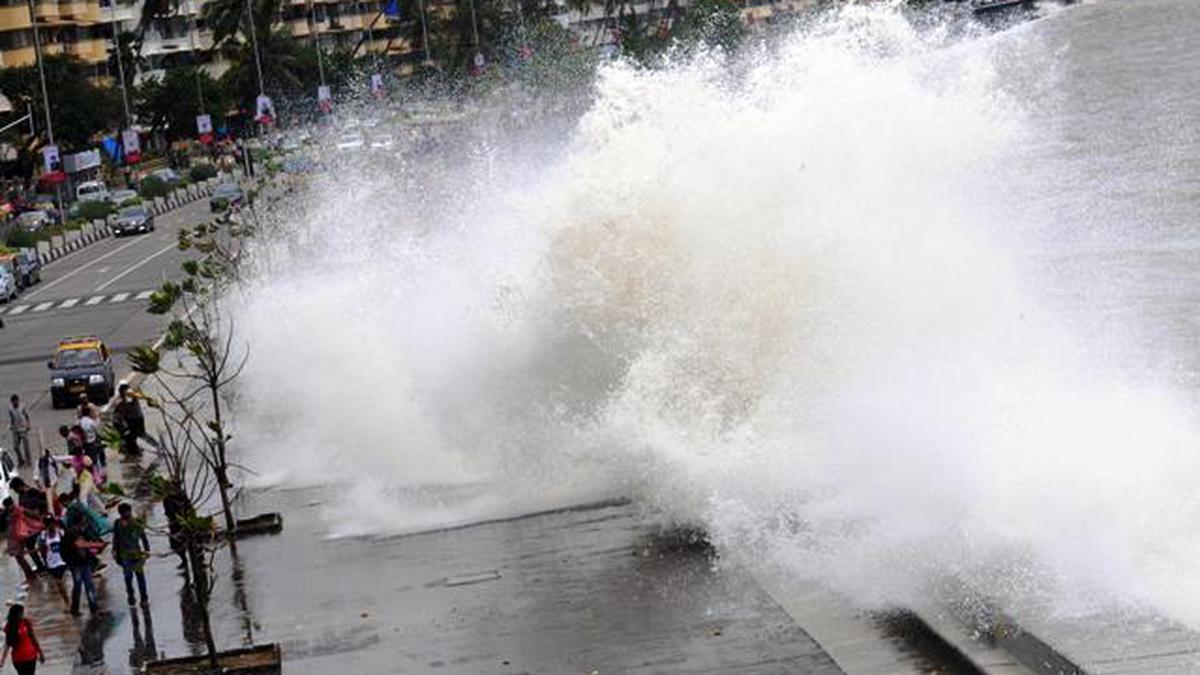News Highlight
WMO cautioned that sea level rise poses a serious threat to both China and India in a report titled “Global Sea-Level Rise and Implications.”
Key Takeaway
- Sea level rise is a major threat to India and China, Bangladesh, The Netherlands, and other countries with large coastal populations.
- WMO states that even if global heating is miraculously limited to 1.5 degrees, there will still be a sizeable sea level rise.
Global Sea-Level Rise and Implications” report
- Key Findings
- The rising sea level varies regionally.
- It will infringe on Infrastructure, and coastal communities will be jeopardised.
- It impacts several major global cities, including Shanghai, Dhaka, Bangkok, Jakarta, Mumbai, Copenhagen, New York, Buenos Aires, and Santiago.
- Poses a substantial economic, social, and humanitarian issue, particularly in vulnerable places.
- It will influence coastal ecosystems, linked development, and more than 1 billion people by 2050, in addition to other climate concerns.
- Increased urbanisation in vulnerable locations will compound the effects.
- Storm surges and tidal changes, as observed during the landfalls of Hurricane Sandy (New York) and Cyclone Idai, reinforce it (Mozambique).
Sea Level Rise
- About
- Over the last century, the average sea level has increased more steadily, less than a centimetre per year, but those modest increases add up.
- Today’s average sea level is 6 to 10 inches (6-25 cm) higher than in 1900.
- That’s a significant change: sea level hadn’t altered significantly in the previous 2,000 years.
- Over time, the rate of sea-level rise has also risen.
- According to studies, the sea level rose by 1.2 to 1.7 millimetres per year between 1900 and 1990.
- By 2000, the rate had risen to approximately 3.2 millimetres per year, and the rate in 2016 is predicted to be 3.4 millimetres per year.
Three Primary Factors For Sea Level Rise
- Thermal expansion
- Water expands as it heats up.
- Warmer waters take up more space, accounting for around half of the rising sea-level over the last 25 years.
- Melting glaciers
- Mountain glaciers and other large ice formations naturally melt a little each summer.
- Snows, primarily from evaporated seawater, are often adequate to balance out melting in the winter.
- However, persistently increasing temperatures caused by global warming have resulted in greater than-usual summer melting.
- As well as reduced snowfall due to later winters and earlier springs.
- This causes an imbalance between runoff and ocean evaporation, resulting in rising sea levels.
- Loss of Greenland and Antarctica’s ice sheets
- As with mountain glaciers, increased heat is causing the massive ice sheets that cover them.
- Greenland and Antarctica to melt more quickly
- Scientists believe that meltwater from above and seawater from below is seeping beneath Greenland’s ice sheets, lubricating ice streams and driving them to travel faster into the sea.
Sea Level Rise in India; Case study
- Mumbai
- The potential rising sea level will harm around 998 buildings and 24 kilometres of road length by 2050.
- Chennai
- A 5-kilometre stretch of road and 55 buildings are at risk.
- Kochi
- By 2050, around 464 buildings in Kochi will be impacted, with the number rising to approximately 1,502 buildings during high tide.
- Thiruvananthapuram
- Both sea level rise at high tide and sea level increase by 2050 will likely affect 349 and 387 buildings, respectively.
- Visakhapatnam
- By 2050, projected shoreline alterations are expected to inundate 206 dwellings and 9 km of the road network.

Various steps are taken to tackle sea level rise
- Relocation
- As a mitigating tactic, many coastal cities have prepared to relocate.
- Kiribati Island, for example, intends to migrate to Fiji, while Indonesia’s capital is being relocated from Jakarta to Borneo.
- Building Sea Wall
- In 2014, the Indonesian government initiated a coastal development project named the Giant Sea Wall, or “Giant Garuda,” to safeguard Jakarta from flooding.
- Creating Natural Infrastructure
- Natural infrastructure can be restored in coastal towns as a barrier against storms and coastal floods.
- Natural structures such as barrier islands, oyster and coral reefs, mangroves, seagrass, and salt marshes can absorb storm surges alone or with constructed infrastructure such as seawalls.
- Architecture to Steer Flow of Water
- Rotterdam, the Dutch capital, constructed barriers, drainage, and innovative architectural features such as a “water square” with temporary ponds.
Conclusion
- We can see imaginative and resourceful solutions from communities working together to mitigate sea level rise worldwide.
- Such solutions have the potential to serve as a model for other communities.
Pic Courtesy: The Hindu
Content Source: Times of India



